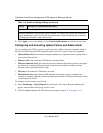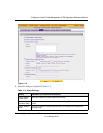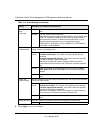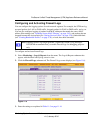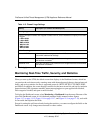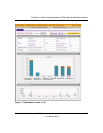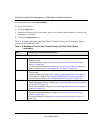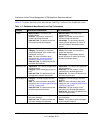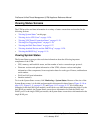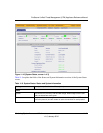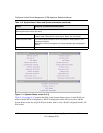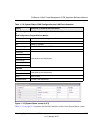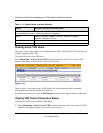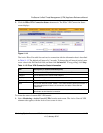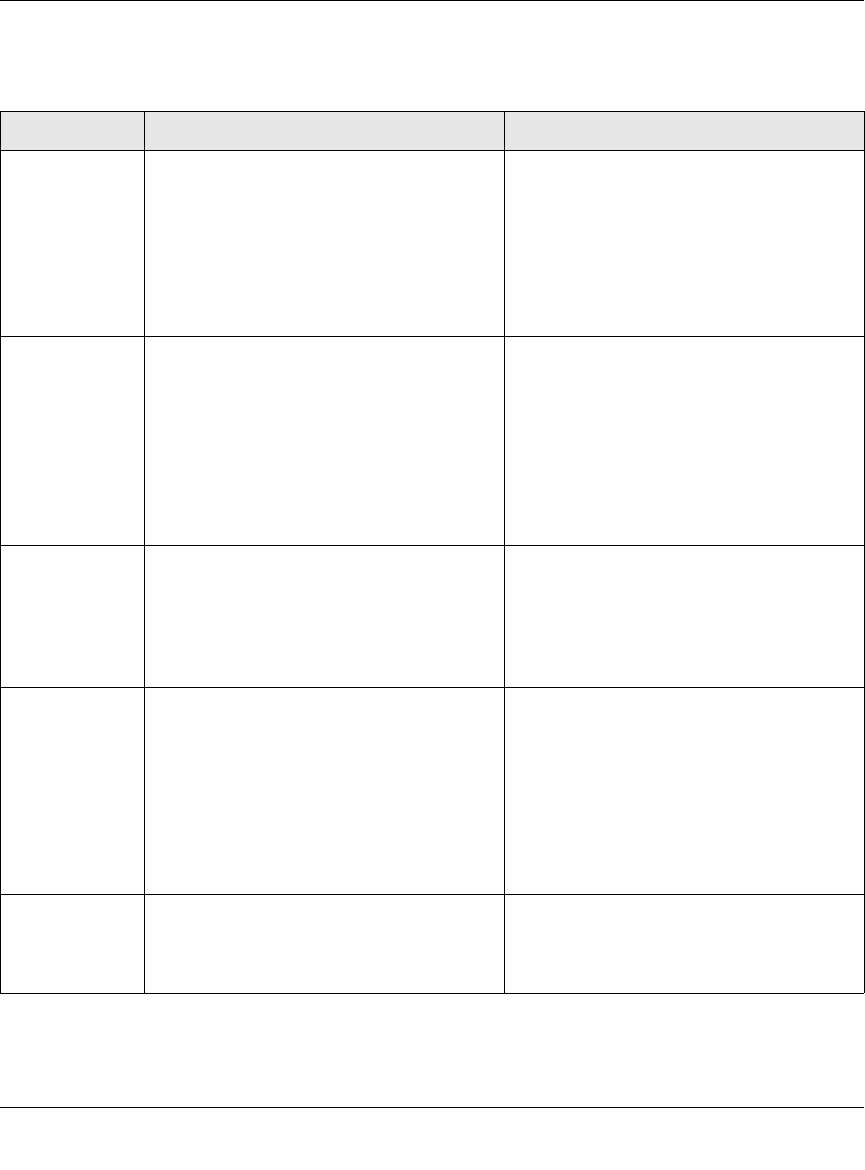
ProSecure Unified Threat Management (UTM) Appliance Reference Manual
11-18 Monitoring System Access and Performance
v1.0, January 2010
Table 11-7 explains the fields of the Most Recent 5 and Top 5 sections of the Dashboard screen.
Table 11-7. Dashboard: Most Recent 5 and Top 5 Information
Category Most Recent 5 Description Top 5 Description
Threats • Malware Name. The name of the
malware threat.
• Protocol. The protocol in which the
malware threat was detected.
• Date and Time. The date and time that
the malware threat was detected.
• Malware Name. The name of the
malware threat.
• Count. The number of times that the
malware threat was detected.
• Percentage. The percentage that the
malware threat represents in relation to
the total number of detected malware
threats.
IPS Signatures • Signature Name. The name of the attack.
• Category. The category in which the
attack was detected, such as Web, Mail,
Databases, and so on.
Note: For more information about
categories, see “Using the Intrusion
Prevention System” on page 5-49.
• Date and Time. The date and time that
the attack was detected.
• Signature Name. The name of the attack.
• Count. The number of times that the
attack was detected.
• Percentage. The percentage that the
attack represents in relation to the total
number of detected attacks.
IM/Peer to Peer • Application. The name of the application
that was blocked.
• Category. Instant messaging or peer-to-
peer.
• Date and Time. The date and time that
the application request was blocked.
• Application. The name of the application
that was blocked.
• Requests. The total number of user
requests for the blocked application.
• Source IPs. The source IP address from
which the request came.
Web Categories • Category. The Web category that was
blocked.
Note: For more information about Web
categories, see “Configuring Web Content
Filtering” on page 6-23.
• Date and Time. The date and time that
the Web request was blocked.
• Category. The Web category that was
blocked.
Note:
For more information about Web
categories, see “Configuring Web Content
Filtering” on page 6-23.
• Requests. The total number of user
requests for the blocked Web category.
• Source IPs. The source IP address from
which the request came.
Spam • Email Subject. The e-mail subject line in
the spam message.
• Date and Time. The date and time that
the spam message was detected.
• Recipient. The intended recipient of the
spam message.
• Emails. The number of spam messages
for the intended recipient.



